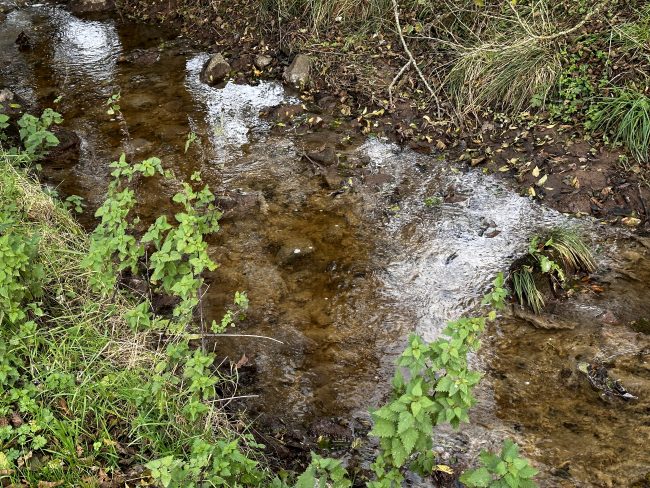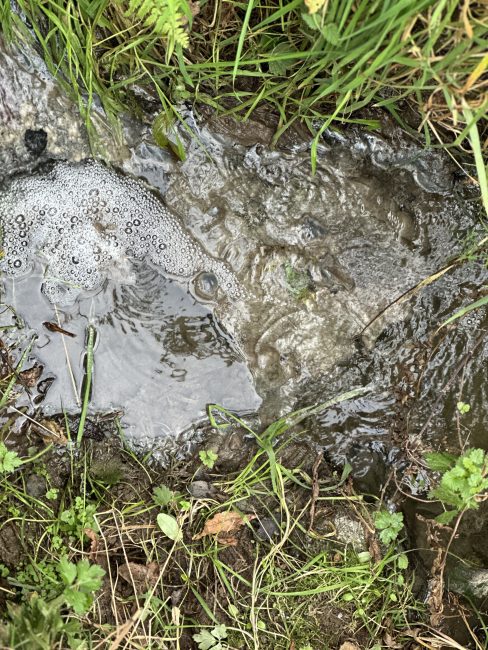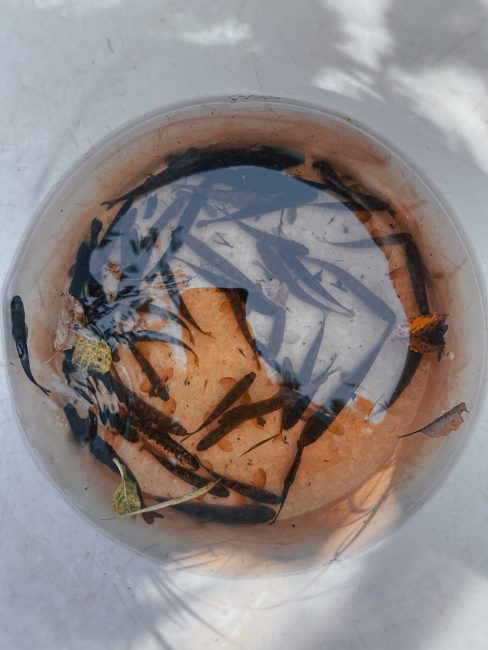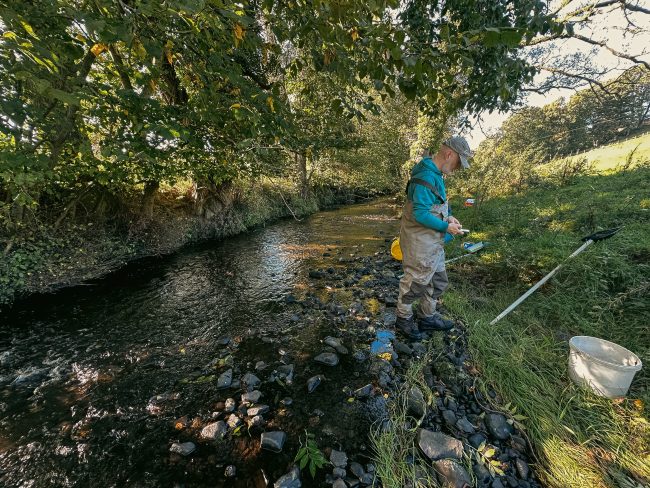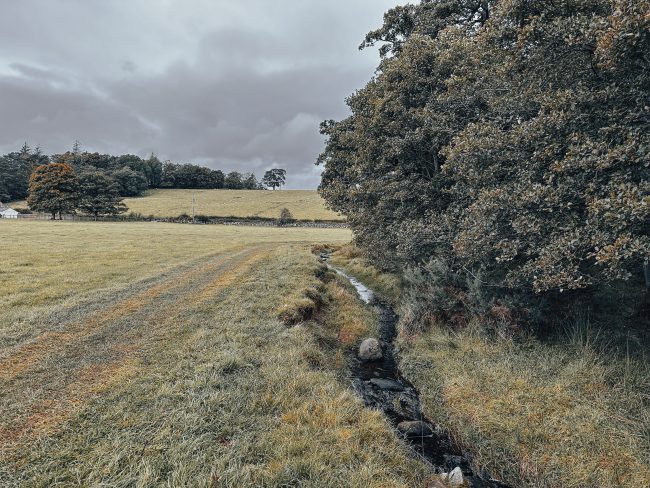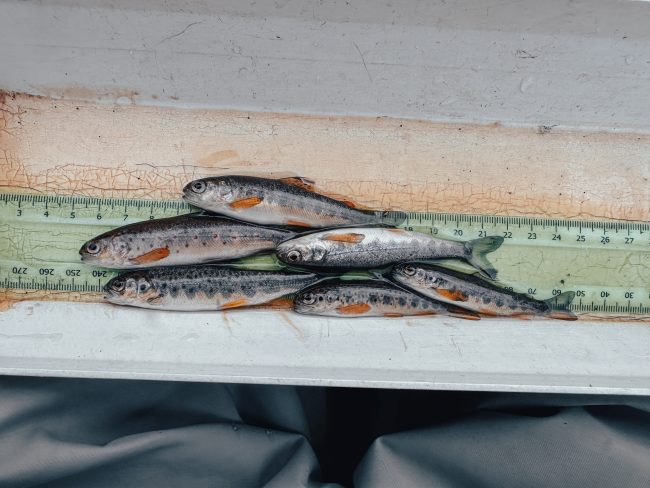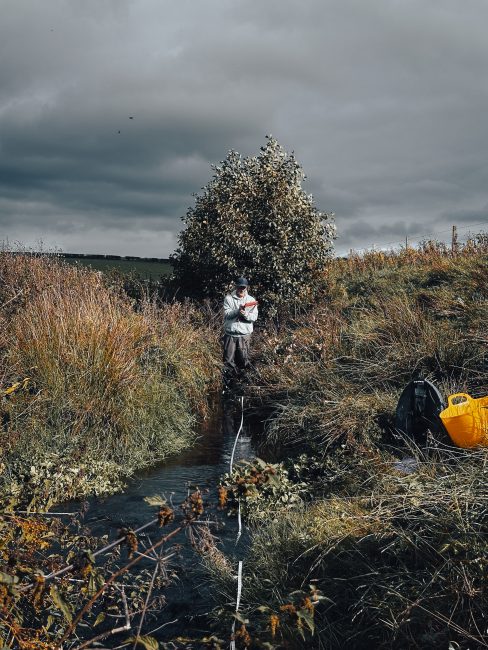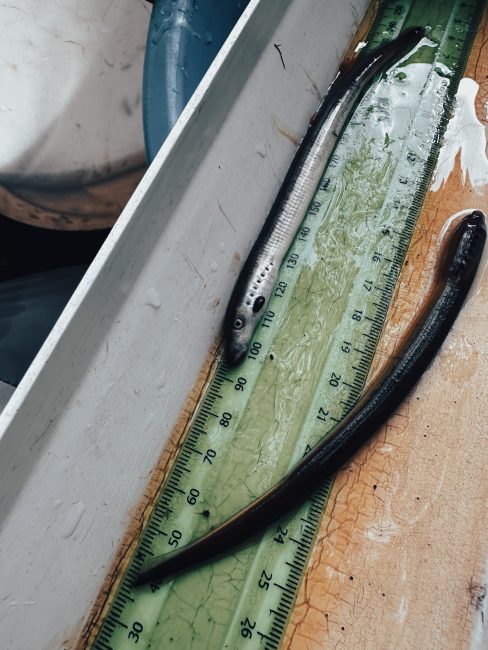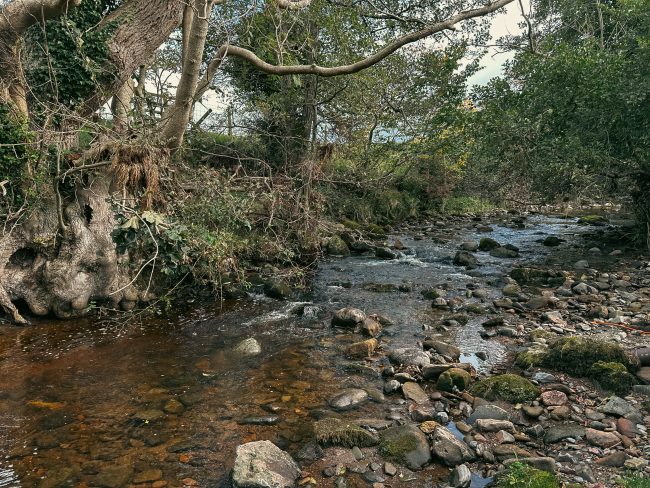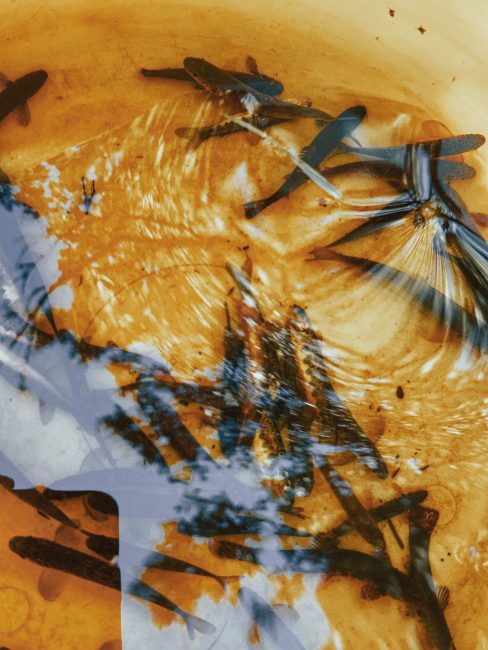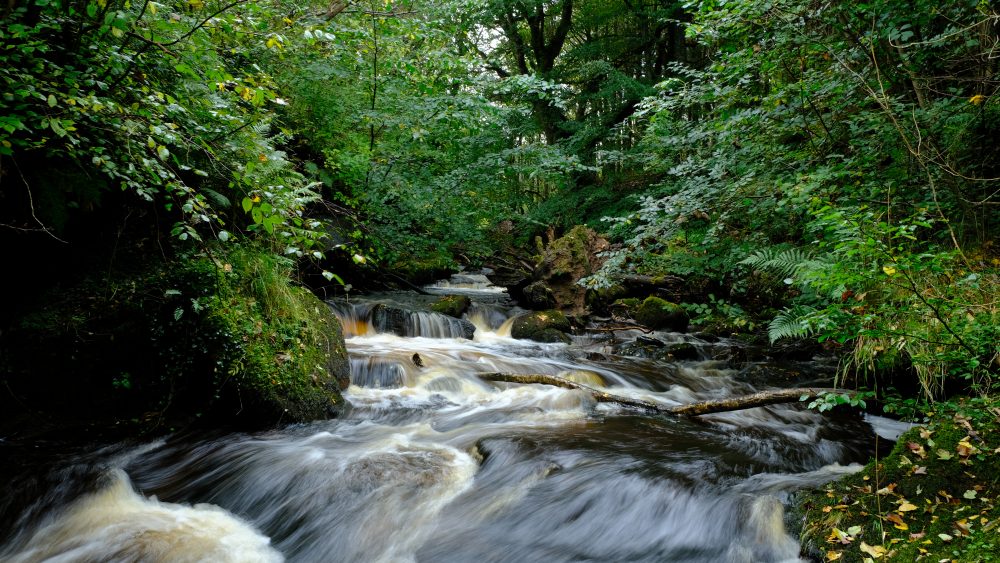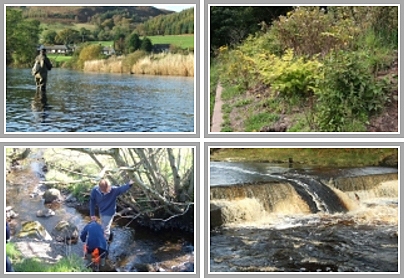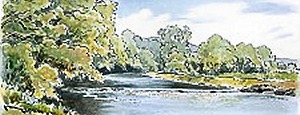Over the last couple of weeks we’ve been carrying out surveys across the Girvan catchment – specifically in the tributaries to understand of how well used the burns were by salmon over the winter last year. We have several reference sites that we try to assess annually or biennially and over the last few weeks we’ve visited most of these as well as some others where we are monitoring recovery after pollution events over the last few years.
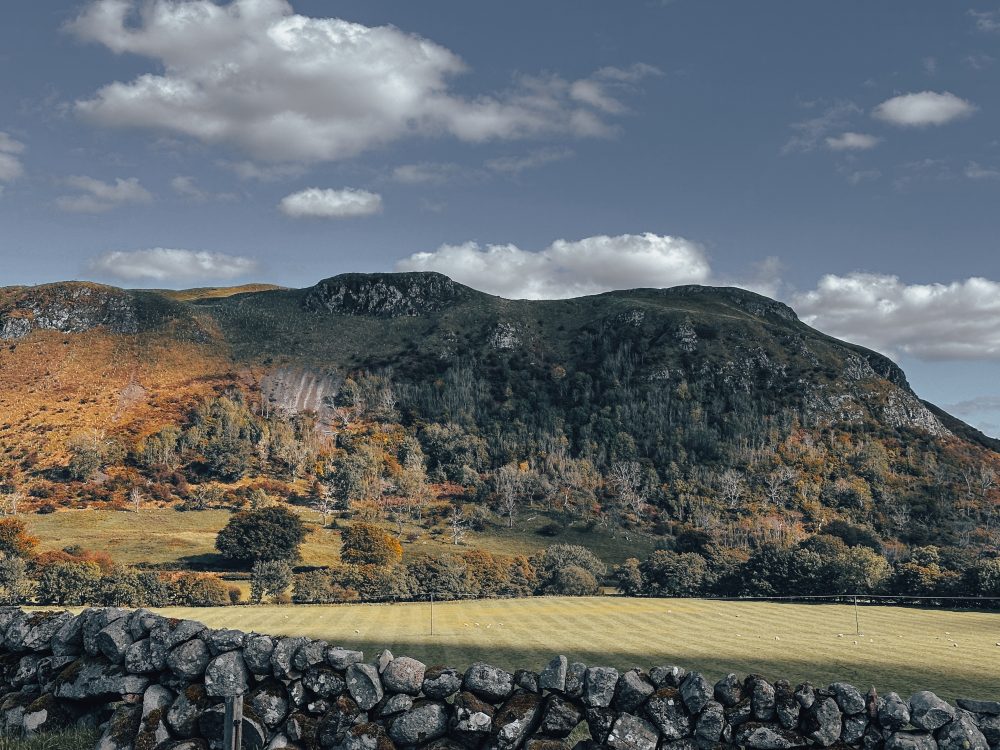
The Girvan Valley above Straiton is a wonderful place to be on an autumn day especially as we enjoyed a warm sunny day – it being a Friday also helped no end too!
We’ve been hearing of salmon being caught at both ends of the river over the last few weeks as well – with anglers doing particualry well at Blairquhan. Most of these fish are well coloured now with few fresh fish entering the system much past mid-summer but it is encouraging that when there are anglers on the water they are catching fish. We know the Girvan is under fished compared to the other Ayrshire rivers and it’s hard to understand why when there is so much great water across the catchment.
- The bed of the Claty Burn was coated in sewage fungus in October 2023 when we visited the burn hoping to complete a few electrofishing sites.
- The pollution stemmed from a small ditch – when we arrived it was immediately apparent something was wrong as the smell that hit our nostrils was rank.
The Dyrock was badly polluted in 2020 with almost all fish wiped out from the Muirsmill Burn (a small tributary of the Dyrock Burn) downstream. We found dead fish to the Spallander hydro scheme where it discharges into the Muirsmill Burn and we found fish alive and healthy beyond this discharge. This was a strange occurrence and the cause was never truly identified however, with most of the Dyrocks fish population wiped out monitoring the recovery has been crucial. It is remarkable and a testament to the resilience of fish that we’re seeing most of the lower burn well populated with salmon fry now – given that salmon are now classified as an endangered species it’s crucial that the habitats upon which they rely are kept as clean as possible. This is why we spend so much time and money securing funding to fence these watercourses and protect them to the best of our ability in the hope that should fish return to spawn in these areas we’re giving them the best opportunity to thrive.
- We recorded good numbers of salmon fry from our first site, there were a handful of trout too. This was a very encouraging way to start the days surveying off.
- One of our Trustees, Allan joined us for the day – Allan joins us most Fridays to help with everything from electrofishing to accounting although I think he prefers being in waders to looking at spreadsheets!
Similarly the much smaller and shorter Claty Burn suffered a potential total wipeout of fish in 2023 as the burn was coated with extensive sewage fungus that was emanating from a ditch that enters the burn. The pollution has since been addressed and the burn is looking very clean again and despite it’s size still produces and supports salmon and trout. It would be quite a sight to see salmon spawning in a burn that’s significantly narrower than most peoples TV screens but given the chance all these small watercourses should produce fish. There is a finite amount of habitat that is accessible to salmon, trout and eels in every catchment and we try to ensure that fish are able to access as much of it as possible and that it’s well maintained. We of course don’t own any land but instead work with landowners/land managers to maximise the potential of these watercourses.
- The small and aptly (at least periodically) named Claty Burn. Now looking very clean the burn is producing modest numbers of salmon and trout fry but historically has been better than this years results. Given a little more time we would expect these numbers to continue to improve to what we consider baseline.
- I think this was all the fish we found during our survey – given the size of the burn we wouldn’t expect parr to hang around long before dropping into the lower reaches of the burn or into the main river where the habitat is far more suited to the next Lifestage.
We also visited the Cloyntie Burn to see if salmon had spawned here and if they had made it over what is a tricky bridge culvert. We looked at a site immediately upstream of the culvert which we’ve been monitoring for some years now and found what I considered to be quite disappointing numbers of trout fry. Historically this has always been quite productive and we had to work quite hard to get a few fish before we went downstream below the culvert to see what the story was there. We didn’t fair much better downstream although the habitat here is quite degraded – the burn is fenced on one bank which is great but the left bank is open to livestock and there is significant poaching and bank erosion which has caused the burn to be come overside (shallow and little habitat for fish) as well as quite badly silted. A fence here would make a huge difference – however fencing is hugely expensive and without access to the burn livestock require alternative watering arrangements – there’s a project in the making here to improve the passability of the culvert and the surrounding habitat. That’s the value of these surveys, they help direct thoughts and priorities for each sub-catchment.
- The site above the culvert and I expect the poor fish numbers are as a result of trout (as well as salmon) not making it beyond the culvert over the last couple of years.
- We recorded lamprey downstream of the culvert in the margins where there was a silt bed – there is a place for silt as a valuable component of river systems as lamprey (which are a native species) require this habitat however you can have too much of a good thing too and too much silt is incredibly detrimental to all other life in the river.
We also visited the Lindaystone Burn as well as the Penwhapple Burn which are fairly major tributaries of the mid and lower river. Both come off steep hillsides and have excellent water quality and excellent in stream habitat and are generally good producers of salmon and trout particularly in the lower reaches before the burns climb steeply up hills. It’s not that either of these watercourses have waterfalls that make them inaccessible to fish but the steady climb up steep terrain seems to prevent migratory fish penetrating too far in either watercourse. However, where salmon don’t go sea trout and the resident trout population thrive particularly in the Lindaystone Burn where we record excellent trout numbers most years. The Penwhapple is generally consistent but doesn’t seem to produce quite as many fish – this is perhaps due to the large amount of coniferous forestry that surrounds the burn as the Lindaystone Burn is enveloped in native broadleaf woodland. Both are potentially over-shaded in some areas and this can reduce the productivity of the burns as lower water temperatures suppress growth rates but also protect against rising water temperatures.
- There’s not much you would change about this burn – the Lindaystone Burn which joins the Girvan at Dailly is a fantastic example of what a tributary ought to be.
- A very healthy bucket of trout and salmon from the Lindaystone Burn.
- The Lindaystone Burn running off after a spate – there’s nothing to stop fish going a long way out onto the hillside but the cumulative impact of every cascade and small falls stops fish from pushing too far – I’m sure if we had more returning fish there would be a pressure to push more fish into the periphery of these catchments in a bid to find vacant habitat.
